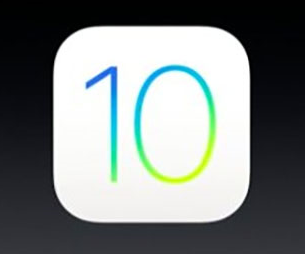Apple released iOS 10.0.1
 Not all iOS 10 users who recently updated their iDevice devices noticed that they were updated immediately to version 10.0.1. Apple rather quietly decided to release an update for iOS 10 on the same day that version 10.0.0 was released. There are several reasons why Apple was forced to release a firmware update. The first is that some iOS 10 users have encountered errors when upgrading to the new OS via OTA on their devices. Another reason is less noticeable, but no less important. In iOS 10.0.1, Apple closed the now-known vulnerability CVE-2016-4655, which was “fixed” in iOS 9.3.5 and was used by attackers in a complex directional Trident attack for a remote jailbreak, for the second time. In particular, the vulnerability is used to bypass the Kernel ASLR in iOS and makes it possible to exploit another LPE vulnerability to gain root rights.
Not all iOS 10 users who recently updated their iDevice devices noticed that they were updated immediately to version 10.0.1. Apple rather quietly decided to release an update for iOS 10 on the same day that version 10.0.0 was released. There are several reasons why Apple was forced to release a firmware update. The first is that some iOS 10 users have encountered errors when upgrading to the new OS via OTA on their devices. Another reason is less noticeable, but no less important. In iOS 10.0.1, Apple closed the now-known vulnerability CVE-2016-4655, which was “fixed” in iOS 9.3.5 and was used by attackers in a complex directional Trident attack for a remote jailbreak, for the second time. In particular, the vulnerability is used to bypass the Kernel ASLR in iOS and makes it possible to exploit another LPE vulnerability to gain root rights.We already wrote about Trident Cyber Attack and Pegasus malware. By Trident is meant a three-step bundle of exploits for several vulnerabilities with identifiers CVE-2016-4657, CVE-2016-4656, CVE-2016-4655. The first one is present in the WebKit web browser engine and is used for remote code execution in Safari, the second one is used to bypass the iOS core defense mechanisms (KASLR bypass), and the third one to elevate the privileges of malicious code to the maximum level, which makes jailbreak possible.

')
According to the security recercher @ i0n1c, the first update for CVE-2016-4655 was cosmetic and was intended only to prevent attackers from exploiting the vulnerability in the future. While iOS 10.0.1 patch already closes the vulnerability itself. Note that users of more outdated models of devices with iOS 9.3.5, who could not upgrade to iOS 10, still have not properly closed vulnerability CVE-2016-4655.
To check the current version of iOS 10, users of iPhone 5+, iPad mini 2+, iPad 4, iPad Air 1/2, iPad Pro, as well as iPod touch 6 should go to Settings → General → Software Update.

be secure.
Source: https://habr.com/ru/post/310238/
All Articles